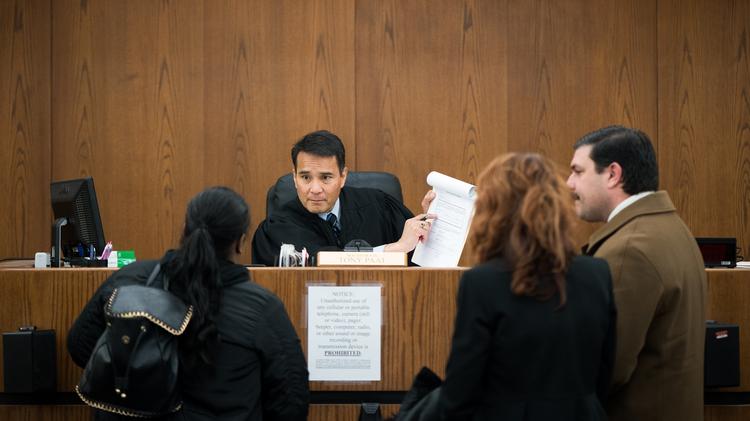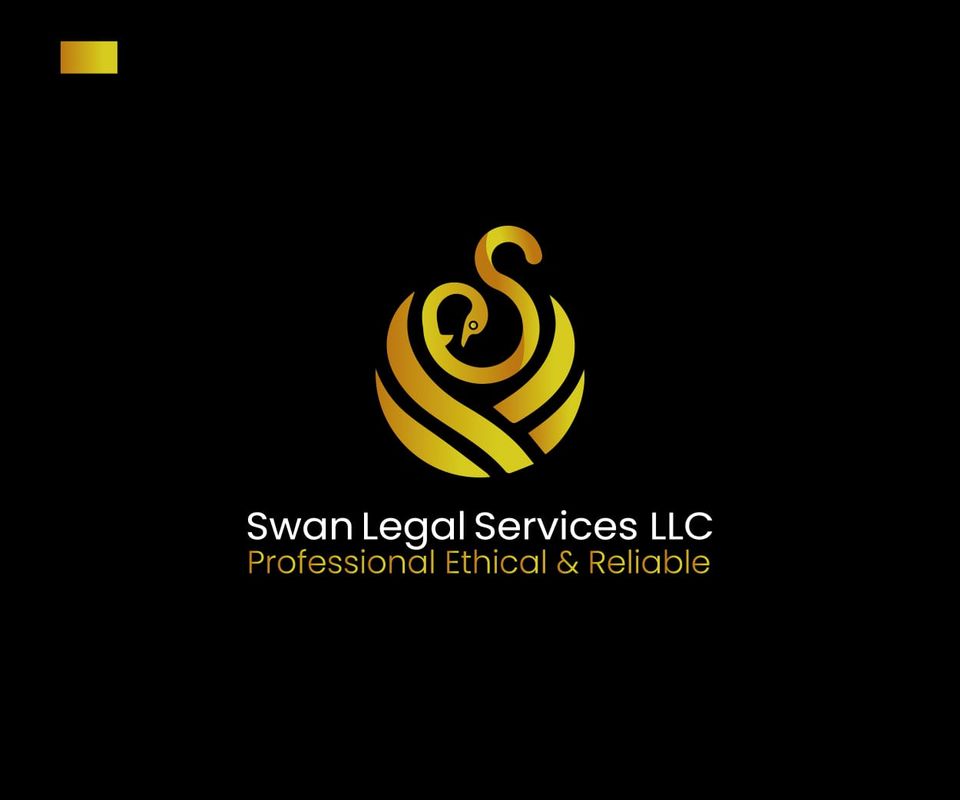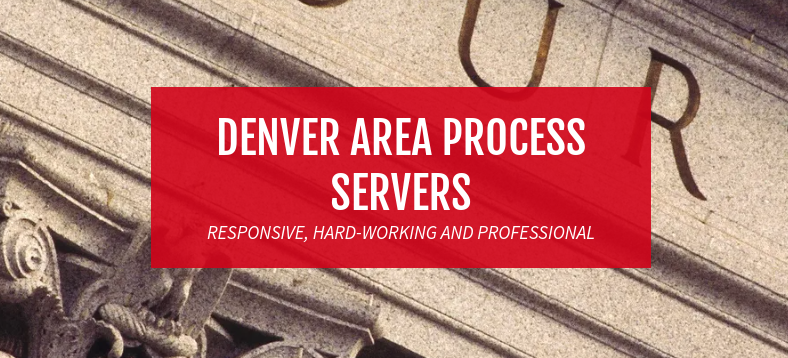Tenants have rights in an Eviction-Learn your rights
Tenants have rights in an Eviction, Laws are set forth for each State. Learn your rights as per the State Statutes; Laws Pertaining to Evictions.
First We would suggest Communication!
If you can talk to your Landlord to resolve the problem try this. In an Eviction there are some Reasons that you as a Tenant would want to Avoid being Evicted.
Eviction Court: This can be humiliating experience and also matter of permanent public record.
Dispossession: You will be forcibly removed from the premise (Apt).
Judgment(s): Your credit rating will be severely damaged.
This may also result in:
a. -A collection process until your debt is paid in full
b. -Possible seizure of assets you may own, including bank accounts.
c. -Garnishment of wages.
d. -Notification of credit bureaus causing inability to qualify for line of credit, including credit cards, car loans and mortgages.
e. -Notification of National Tenant Reporting Services causing inability to qualify for rental housing (Most qualify rentals require credit & tenant screening) We understand that you are having difficulties paying your rent or complying with your rental Contract. We sincerely hope you will be able to resolve any problems you are currently experiencing and bring your account out of eviction status
GENERAL INSTRUCTIONS
1. You must file a written Answer in an eviction case if you wish to present evidence or witnesses at your hearing. This is particularly important if you did not do the things your landlord says you did and you have evidence to support your side of the story.
2. You should file your Answer before the hearing and you must provide a copy to your landlord. If you do not have to time to file it or give it to your landlord before the day of the hearing, then bring the completed Answer to the court on the day of your hearing and file it with the Clerk before the hearing. Make sure you bring enough copies for you, your landlord and for the Judge. Give one copy to the Judge during your hearing.
3. In your Answer, you must admit or deny three things:
(i) Whether or not you should have to leave the property (usually because you did or did not do something in violation of your lease). If you are being evicted for something other than not paying your rent, you should consider speaking to an attorney (see above).
(ii) Whether or not you owe the damages (rent and other costs) that your landlord says you owe in the Complaint; and
(iii)Whether you were properly served the 3-day Notice to Quit (generally, this notice can be given to you in person, left at your home or office, or taped [posted] to your front door.) This question is not asking whether you were properly served the Complaint and Summons for the hearing. If you do not think the Complaint and Summons for the hearing were served properly, you should speak to an attorney (see above).
(iv)You will have a chance to explain your side in more detail at the hearing, if you appear.
(v) If you fail to appear, the Court may grant all that the landlord is requesting.
Note: If you get a Notice from your Landlord – Dont Wait till last moment to take action! Many times Tenants wait and they are then placed in Court for an Eviction or we have heard the Final Judgements have been placed on your door. At that point it may be hard to stop an Eviction.
Learn Your Rights in the State your apartment is located in.
Guide to Tenants Eviction Defenses
You may need to learn about eviction defense if you have received an eviction notice or summons and complaint, because that means you are about to be, or are, being sued.
For anyone trying to understand eviction defense, this guide provides general information about defending against eviction lawsuits for tenants, and specific details about framing legal arguments to formulate a reasonable defense for court. This guide is not meant as a “how to,” but essentially an overview of how an eviction defense is developed.
In this guide, we’ll define “eviction defense” and discuss how to prepare a defense to an eviction for the purposes of court proceedings (or trial). This includes identifying defenses against an eviction action, the purpose of each defense, and how to prove them at trial. If you’re concerned your landlord is going to evict you, or if you have been“served” an eviction notice or “unlawful detainer” (eviction lawsuit), this guide will help identify applicable defenses to an eviction case, how to use each, and how to set up an eviction defense.
OVERVIEW OF EVICTION DEFENSE
What is eviction defense? This term implies an overall defense to eviction. As we define “eviction defense,” not only we will talk about an overall defense, but also a variety of defense options, and individual and separate defenses within the overall defense. We must understand that there are separate courses of action and specific defenses that make up the overall eviction defense. There are many individual eviction defenses, and several methods to defend against an eviction action. Here, let’s define “eviction defense” as:
- The overall defense to an eviction;
- The available actions or responses that can be applied;
- The individual and separate defenses that fall within the overall eviction defense. Otherwise known as “affirmative defenses.”
- The evidence to prove the eviction defense.
CALCULATE DEADLINES
Before you take any steps, if you are being sued, make sure to calculate the deadline(s) that apply. If you have been served a summons and complaint for unlawful detainer, you will only have five (5) days to file a response in court. This is the first deadline. If any deadlines are miscalculated or missed altogether, the plaintiff (landlord) can obtain a default (automatic judgment). There is no point of having an eviction defense if the other side gets an automatic win.
UNLAWFUL DETAINER VERSUS EVICTION DEFENSE
Before we get into eviction defense, let’s take a moment to discuss the reason for it… the Unlawful Detainer (eviction lawsuit). An unlawful detainer lawsuit is a civil court action brought by a landlord to legally evict or “remove” a tenant from a property. In California, eviction cases are called Unlawful Detainers. In other states, they may be referred by a different name such as, “summary possession,” summary process,” “ejectment,” or “repossession.” In California, eviction court proceedings start when the landlord files an unlawful detainer or “UD.” The UD includes a summons and complaint. The summons is the official notice from court that the defendant is being sued. The complaint claims the allegations why the tenant should be evicted. Claims in UD cases are based on different types of evictions. For example, when a tenant does not pay rent (“non-payment or rent”). Later, we’ll go over the most common types of eviction. But, conventionally, eviction defense is to challenge versus unlawful detainer.
EVICTION DEFENSE RESPONSES
Once a defendant is served a UD, they must file a response to initiate their eviction defense. Like other civil proceedings, there are select options to defend against an eviction with varied responses. The initial response is dictated by the status of the UD. Responses to an eviction case are:
- Motions to Quash;
- Motions to Dismiss;
- Answer;
There may be other eviction defense motions or steps, but generally, these are the most employed. Let’s briefly cover these three.
- Motion to Quash
A motion to quash is used when service of the summons and complaint were not made as required by law. If the tenant was not properly served the eviction lawsuit, a motion to quash may be filed. If the motion is successful, the landlord must re-serve the lawsuit correctly. - Motion to Dismiss
If there is a legal defect with the summons and complaint, there are different types of motions to dismiss that may by filed. For example, if the landlord files the lawsuit before rent is late. We’ll cover eviction notices and how they apply later. If the motion is successful, the court may allow the landlord to make corrections or “amend” the complaint, or require a new case to be filed altogether. - Answer
The filing of an “answer” is largely used by most litigants as their only response to an eviction case. It is the fundamental eviction defense response, and at some point, must be filed in every eviction case. It is the single most important part of the eviction defense, aside the actual trial. Compared to the previously mentioned motions, which attack only specific segments of a UD, this response holds the entirety of the eviction defense. If a defense is not alleged on am Answer, it may not be later raised as a defense at trial. You use it or lose it. We’ll discuss formulating defenses for an answer later in this article.
EVICTION DEFENSE – ANSWER
As indicated above, the fundamental eviction defense response is the Answer. The Answer holds all the defenses that a defendant will make to challenge the allegations in the UD complaint. A defendant’s entire case, its arguments, defenses, and demands for recovery, are included in the Answer. If a demand or defense is not alleged in the Answer, it may not be used for trial. Therefore, it is crucial that the proper eviction defenses are claimed by the defendant and included in the Answer. Since the Answer is so crucial, we’ll examine eviction defenses that go into an Answer in more detail.
EVICTION DEFENSE BASED ON EVICTION TYPE
Let’s take a step back and study types of evictions that would be claimed in the UD. For the most part, each type of eviction has distinct types of defenses to go with it. To understand which defense applies to a specific type of eviction, we must first look at the various types of eviction.
- Eviction for Non-payment of Rent
This is the most common reason for eviction. A tenant is unable to pay rent, and therefore the landlord starts an eviction for “non-payment of rent.” The applicable eviction notice a tenant receives with this type of eviction is a “3-Day Notice to Pay Rent or Quit” But, what if the reason the tenant was unable to pay rent was a result of the landlord’s actions or in-actions? For example, what if a tenant was unable to pay rent because he had to pay an excessive water bill due to the landlord’s failure to maintain the plumbing at the property? In cases involving “non-payment of rent,” tenants may also “withhold” rent because of the landlord’s failure to make necessary repairs or maintenance. Should a tenant be evicted for withholding rent? Well, if the tenant has approached this situation in the proper order, this may be an acceptable defense to eviction. We’ll talk about the numerous defenses to this type of eviction later.
- Eviction for Termination of Tenancy (no-fault eviction)
Just as a tenant who may terminate their tenancy with 30 days’ notice to the landlord, California law allows landlords to do the same for tenants who live in a property of one year or less. For tenants living in a property more than a year, the landlord must give 60 days’ notice. However, in some cities under local “rent control” or “eviction control” laws, landlords are prohibited from terminating tenancy this way. Evictions legally initiated under these laws do not require any reason or “cause.” The landlord can simply choose to “terminate” the tenancy. If a tenant is unable to comply with the termination notice, the landlord may pursue an eviction in court to regain possession of the property. Evictions initiated under this reason are the toughest to defend against because they do not require any reason or “cause.” The applicable eviction notice a tenant receives with this type of eviction is either a “30 Day Notice to Terminate Tenancy” or a “60 Day Notice to Terminate Tenancy.”
- Eviction for Breach of Lease or Rental Agreement
“Breach” means breaking or violating. Any time there is written rental agreement or lease, the “rules” of the tenancy are clearly stated. Typically, the written agreement outlines all the rules a tenant must follow. It is an instrument to protect the landlord and his property. Any “breach,” such as having pets when they are prohibited in the agreement, are a violation that can lead to eviction. But, what if the pet is a trained dog for a disabled tenant? We’ll talk about that later. However, any “breach” is cause for eviction. Usually, landlords notify tenants of breaches of the rental agreement, and give them an opportunity to correct or “cure” the breach. The minimum amount of time a landlord must give a tenant to “cure” a breach is three days. If a tenant is unable to comply with the notice to cure the breach, a landlord may initiate an eviction.
The applicable eviction notice a tenant receives with this type of eviction is either a “3 Day Notice to Cure Covenant or Quit” or a “3 Day Notice to Perform Covenant or Quit.” What about “oral” agreements? A tenancy may be created under an oral agreement, and nonpayment of rent can be enforced. However, it is difficult for a landlord to prove there was a breach of oral agreement for most anything other than rent. This may also work against a tenant because the landlord can simply change terms later. If terms have been changed in writing, these would be legal even if the original rental agreement was oral.
- Eviction after Foreclosure
There are two types of eviction that fall under the “Eviction after Foreclosure” category. The first is when the owner of a property defaults on his mortgage and the bank forecloses. The home is then sold, and the new owner initiates eviction based on a “Three-Day Notice to Quit” under This type of 3-day notice is different from a three-day notice to pay rent-or-quit because there is no alternative except “quit.” The only way the previous home-owner can comply with the notice is to move-out within three days. The second type of eviction under this category is related to tenants of the foreclosed owner. Often, properties are leased to tenants by an owner who later defaults on his mortgage. The tenant may be paying rent on time, and is otherwise a “good tenant.” But, after the foreclosure, the new owner may initiate an eviction anyway. Under this type of eviction, tenants must be afforded the same process to terminate tenancy under law. If a tenant has a fixed-term lease, even with the previous foreclosed owner the property, that lease may continue. However, under some circumstances, even with a lease, the tenancy may be terminated with a 90-day notice.
- Eviction for Tenancy At Will
A “Tenancy At Will” is basically a person who lives at a property for an indefinite period without ever paying rent. ex of case law:(Covina Manor v. Hatch (1955) 133 CA2d Supp 790). Usually, a tenant-at-will is a relative who lives with another for free. For example, an adult child living with parents. This type of tenancy only requires a 30-day notice no matter how long the tenant has resided at the property.
There are other unusual types of eviction. But, for the purposes of this guide, we will focus on the most common as listed above. In the next section, we’ll look at some of the eviction defenses and how they apply to these evictions.

Previously, we covered the types of evictions and the notices required for each. In this section, we will discuss various eviction defenses, or “affirmative defenses,” to each eviction type. There are literally hundreds of affirmative defenses to an eviction case.
In a civil lawsuit, the defense a defendant would use is referred to as “affirmative defense.” An affirmative defense is a FACT, which if proved, defeats a case or charge. Some affirmative defenses are relevant to any kind of eviction (e.g. retaliation), and others are only applicable to a specific eviction type. Here, we will provide samples of some common affirmative defenses separated under eviction type, describe each, and show examples of how they may be applicable.
1. Defenses to Eviction for Non-Payment of Rent
| a) | Defense | “Landlord Refused to Accept the Rent” |
| Description | This eviction defense is exactly what it sounds like… the landlord refused to accept the rent. | |
| Example | Tenant was served a 3-day notice to pay rent or quit on the 6th of the month for rent due on the 1st of the month. On the 8th of the month, the tenant delivered rent in full by cashier’s check to the landlord, but the landlord refused to take the cashier’s check. Then, the landlord still proceeds with evicting the tenant. | |
| b) | Defense | “Landlord Waived or Cancelled the Notice to Quit” |
| Description | The landlord accepts full or partial rent during or after Notice, or agrees to allow the tenant to pay rent at a later date. | |
| Example | Tenant was served a 3-day notice to pay rent or quit on the 6th of the month for rent due on the 1st of the month. On the 9th of the month, the tenant and Landlord made an agreement that rent would be paid by the 21st of the month. The tenant pays the rent, or attempts to pay the rent, in full on the 21st. But, the landlord still moves forward with eviction process. | |
| c) | Defense | “Plaintiff Breached the Warranty to Provide Habitable Premises” |
| Description | The landlord fails to provide adequate housing conditions, and poor conditions of the property render it un-livable or sub-standard | |
| Example 1 | Prior to Notice, the tenant notified the Landlord regarding a bedbug infestation (a serious health hazard), and the landlord fails to remedy the infestation. The tenant then notifies the landlord that rent will be not be paid because the conditions continue to exist. Instead of taking care of the bedbugs, the landlord moves forward with evicting the tenant. | |
| Example 2 | Prior to Notice, Tenant notifies Landlord regarding a leaking roof, and the landlord fails to make any repairs. The tenant then notifies the landlord that rent will be not be paid because the conditions continue to exist. Instead of making any repairs, the landlord moves forward with evicting the tenant. | |
| d) | Defense | “Retaliation” |
| Description | Action taken against a tenant in response to a tenant’s rightful action. | |
| Example | Tenant reports needed repairs to the landlord, but the landlord makes no repairs. After giving the landlord enough time, the tenant makes repairs and deducts the cost from rent. The landlord then initiates eviction proceedings for full amount of rent. |
There are many other eviction defenses for non-payment of rent. For more information, contact an eviction attorney, or call us for assistance.
2. Defenses to Eviction for Termination of Tenancy
| a) | Defense | “Defective Notice” |
| Description | The 30-Day notice does not provide the tenant with thirty days. | |
| Example | Tenant was served a 30-Day notice on the 5th of the month that requires move-out by the 30th of the same month. | |
| b) | Defense | “Landlord Waived or Cancelled the Notice to Quit” |
| Description | The landlord accepts full or partial rent during or after Notice. | |
| Example | Tenant was served a 30-Day notice on the 29th of the previous month that requires move-out by the 30th of the following month. However, Landlord accepts rent on the 30th of the following month, and continues to file an eviction lawsuit. | |
| c) | Defense | “Retaliation” |
| Description | Action taken against a tenant in response to a tenant’s rightful action. | |
| Example | Tenant reports Landlord to the health department for bedbug infestation, then Landlord evicts tenant with 30-Day Notice. |
There are a limited number of eviction defenses for evictions based on Termination of Tenancy.
3. Defenses to Eviction for Breach of Lease or Rental Agreement
| a) | Defense | “Estoppel” |
| Description | After Notice, Landlord agrees with Tenant that breach is no longer an issue, causing Tenant to believe there was no longer a breach. | |
| Example | Tenant was served a 3-Day Notice to Cure or Quit on the 15th of the month for having an unauthorized pet. On the 17th of the month, Landlord and Tenant come to an agreement where Tenant is given permission to keep the pet. | |
| b) | Defense | “Waiver” |
| Description | The landlord accepts full or partial rent during or after Notice expires. | |
| Example | Tenant was served a 3-Day Notice to Cure or Quit on the 20th of the month for having an unauthorized pet. On the 1st of the following month, Landlord accepts rent payment. |
4. Defenses to Eviction after Foreclosure
| a) | Defense | “Failure to Provide” |
| Description | Prior to foreclosure, the lender fails to serve a Notice of Trustee Sale. | |
| Example | The occupant of the foreclosed home was never provided notice of trustee sale because it was not posted to the door of the property and/or mailed by first class. The lender or new owner then initiates an eviction of the occupant(s). | |
| b) | Defense | “Improper Notice” |
| Description | The tenant who pays rent of the foreclosed home is not served proper 90-Day notice of eviction. | |
| Example | Tenant of the foreclosed property (the tenant of the foreclosed owner) is served an eviction notice that is less than 90 days. |
5. Defenses to Eviction for Tenancy At Will
| a) | Defense | “Defective Notice” |
| Description | The 30-Day notice does not provide the tenant with thirty days. | |
| Example | Tenant-at-will was served a 30-Day notice on the 3rd of the month that requires move-out by the 30th of the same month. On the 1st of the following month, the landlord files an eviction case. |
6. Miscellaneous Defenses to Eviction
| a) | Defense | “Act of God” |
| Description | There was a “superhuman” cause, such as an earthquake, fire, flood, terrorism, that prevents the tenant from fulfilling an obligation. | |
| Example | Tenant could not move-out because a fire destroyed the new residence and prevented tenant from moving there. | |
| b) | Defense | “Failure of Condition Precedent” |
| Description | Tenant could not perform his obligation because the landlord did not perform his obligation first. | |
| Example | The landlord failed to remove previous tenant, which was required by the terms of the agreement before tenant was obligated to pay rent. |
Again, these are just a few examples of eviction defenses that may be used for an Answer. Of course, there are many others that may apply to a particular case, or circumstance. Remember, you must be able to prove these defenses to succeed in court.
FORMULATING AN EVICTION DEFENSE
Finally, after understanding the eviction types and affirmative defenses applicable to each, we now look at the remaining components to formulate an eviction defense. The landlord must prove the claims made in the UD. In turn, the defendant (tenant) must also prove each affirmative defense. Obviously, in any court case you must have proof like evidence and witnesses.
- Eviction Defense Response A written response must be made to begin an eviction defense. At minimum, there must be an Answer filed. The Answer contains the total defense to the eviction, as we previously covered. The rest falls into supporting the eviction defense that is outlined in the Answer.
- Evidence for Eviction Defense Every court case needs evidence to prove its argument. In eviction cases, the landlord is going to present documents as their primary source of evidence to prove their case. As an example, if we use the eviction type of “non-payment of rent,” landlords in these actions are going to present:
- Lease Contract (if any) with the defendant’s signature;
- Payment Ledger or accounting of rent payment, showing checks that were signed by the defendant;
- The 3-Day Notice to Pay Rent or Quit that was served on the defendant;
- Proof of service of the 3-Day notice;
- Any correspondence (including emails and texts) to and from the defendant.
The tenant will need to present evidence to prove their affirmative defense to rebut the landlord’s claims. Based on the above example, if we use the affirmative defense of “landlord refused to accept the rent” as an affirmative defense, the tenant must present:
-
- A verifiable form of payment, such as a cashier’s check or money order, dated on or before the due date, or;
- Proof of mailing payment to the landlord postmarked on or before the due date, or;
- Proof of deposit into an account on or before the due date, or;
- A letter, voicemail, or text from the landlord conveying the refusal.
The evidence required for an adequate eviction defense may differ in scope than what’s listed above. But, having documentation is solid form of evidence. In this example, there is nothing better than showing the court proof of a cashier’s check for the rent dated when due.
- Witnesses for Eviction Defense Continuing with the same example for “non-payment of rent,” landlords in these actions are most likely going to present themselves, or their property manager, as the primary or only witness. The landlord/landlord’s witness normally testifies to:
- Prove the existence of a rental agreement between the landlord and defendant;
- Prove the defendant is a tenant;
- Prove the defendant was required to pay rent as agreed;
- Prove the defendant did not pay rent;
- Verify service of the 3-Day notice;
- Prove any of the evidence listed above.
The tenant will need to present witnesses as well. The tenant is usually the only witness. Although, when there are others who can attest to the tenant’s argument (ideally two or more persons), they may also be presented as witnesses. Again, using the example affirmative defense of “landlord refused to accept the rent” as an affirmative defense, the defense witnesses must:
- Prove the defendant is not a tenant, or;
- Prove the defendant was not required to pay rent, or;
- Prove payment was attempted and refused on or before the due date, or;
- Prove payment was mailed on or before the due date.
Be careful! Many of our clients think that witnesses are solid proof, and the court will accept a witness’s statement as fact. This is not true. Be careful who, and for what, you decide to bring a witness. If you bring your spouse to court as a witness, their statements may be considered biased because they are on your side. Witness statements are not as reliable as verifiable documents, like a bank’s cashier check.
In conclusion, a lot goes into a proper eviction defense. From understanding the various reasons for eviction, to formulating a proper eviction defense, there is a tremendous amount of information needed to understand the intricacies. Check back with our website soon, we are in the process of putting together supplementary information that will add more details to this guide.












